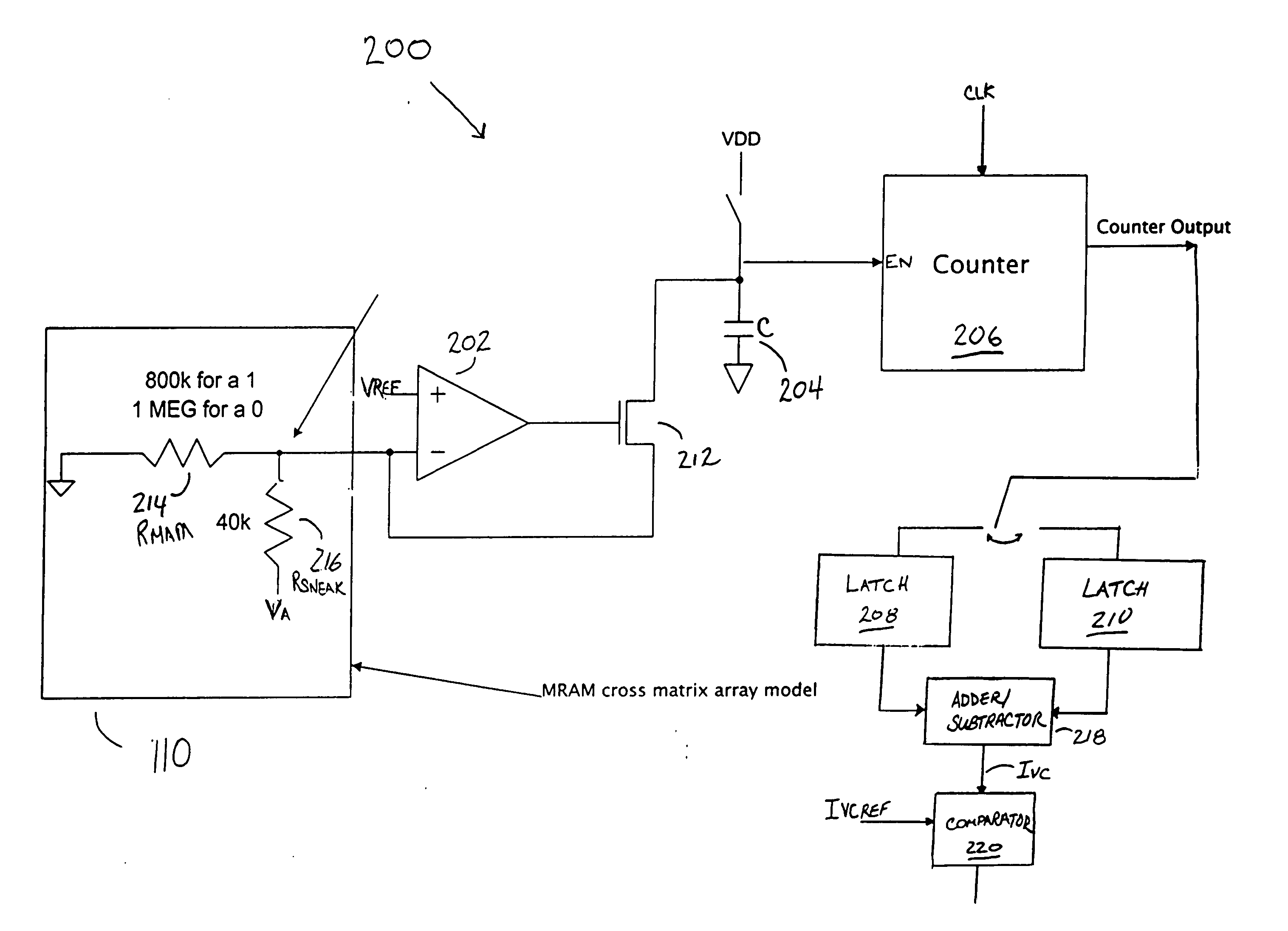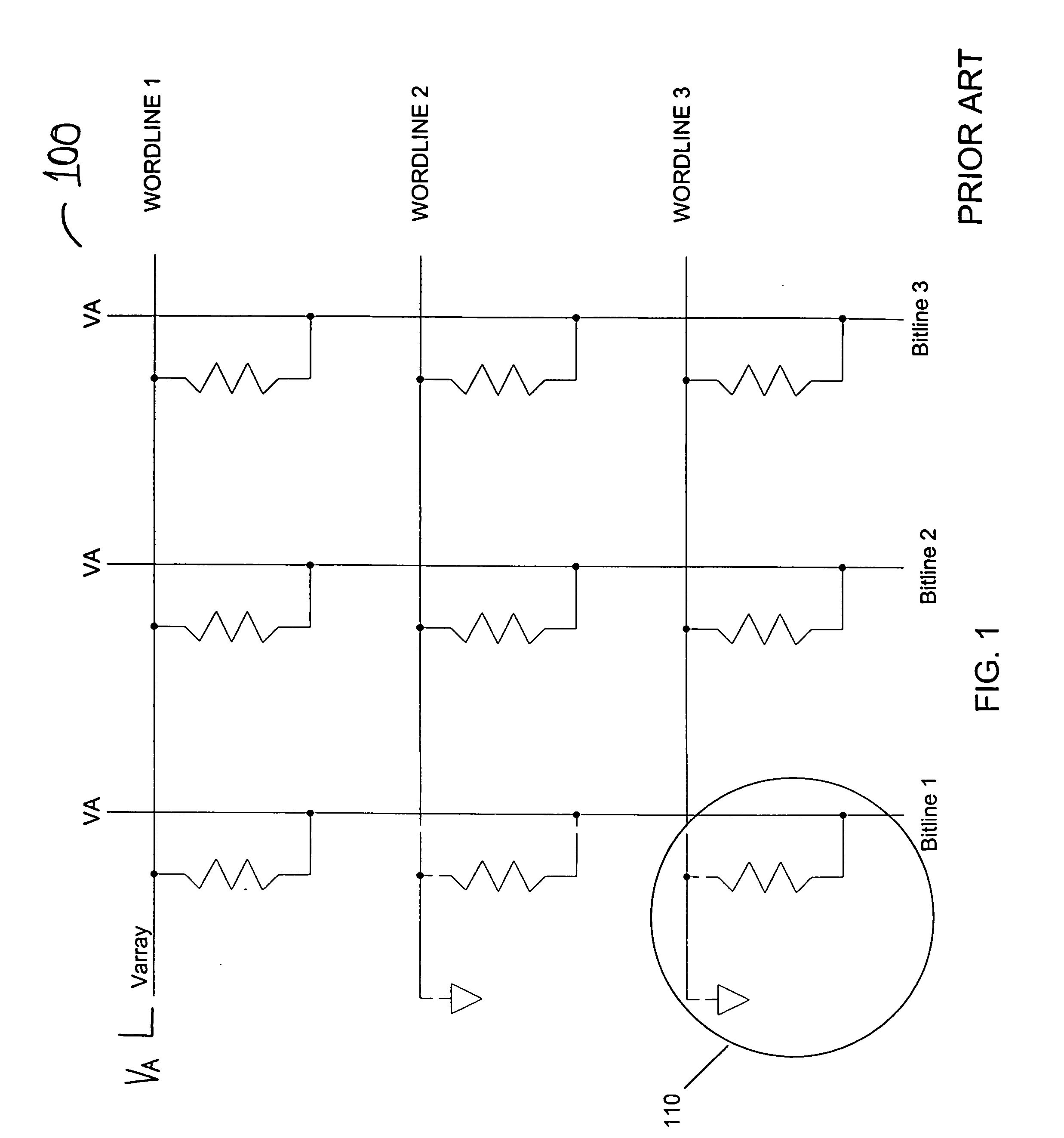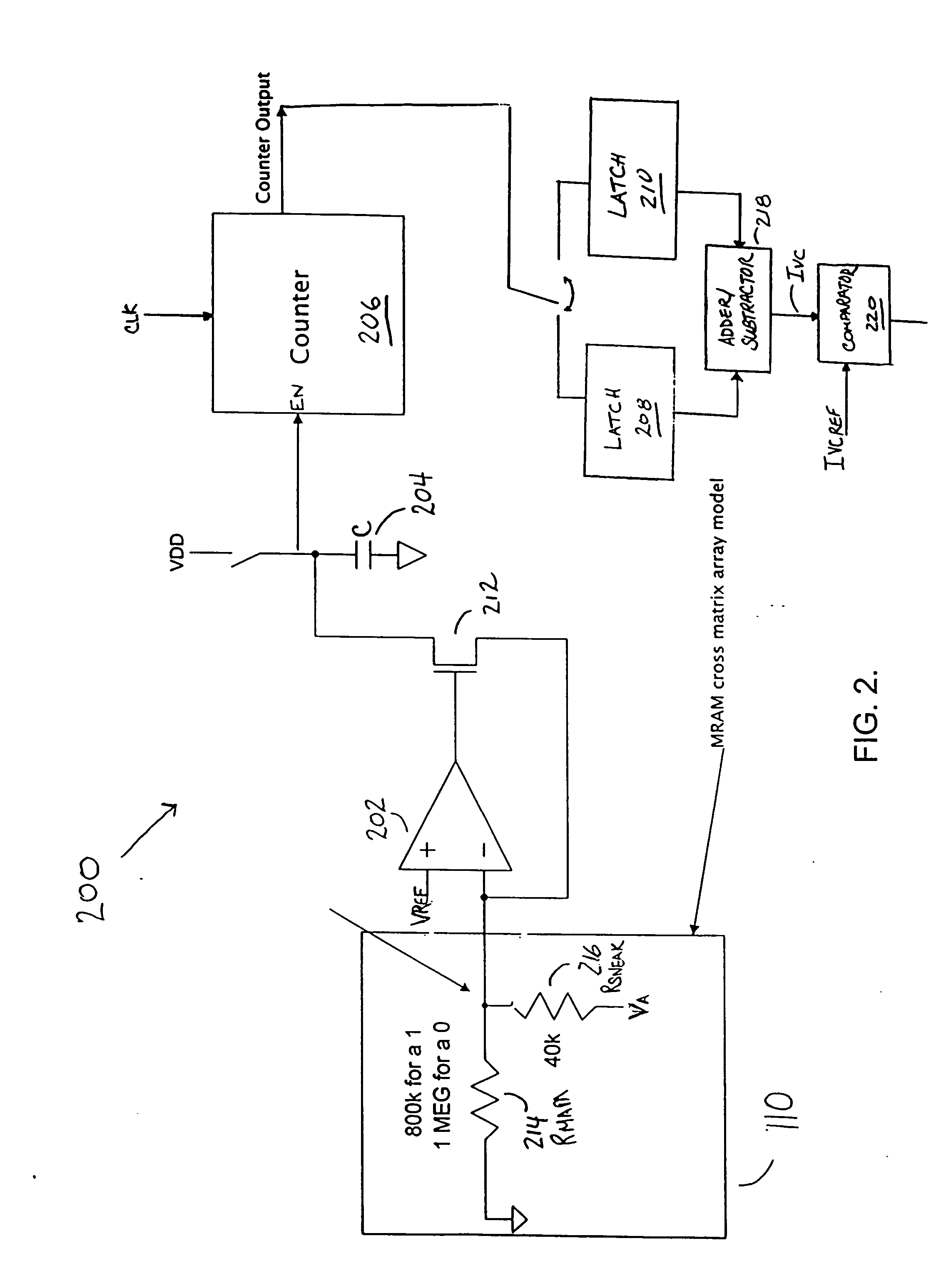Sensing scheme for programmable resistance memory using voltage coefficient characteristics
a programmable resistance memory and voltage coefficient technology, applied in the field of memory circuits, can solve the problems of inability to accurately determine the logic state of the mram cell, difficulty in sensing the logic state of the mram memory cell using current or voltage sensing techniques, and potentially more compact mram devices
- Summary
- Abstract
- Description
- Claims
- Application Information
AI Technical Summary
Benefits of technology
Problems solved by technology
Method used
Image
Examples
Embodiment Construction
[0018] The present invention is applicable to any memory cell which relies on a programmed resistance state to store a logic state. Since an MRAM cell is one such programmable resistance memory cell, for convenience, the invention will be described herein with reference to sensing the resistance and thus logic state of an MRAM cell. However, this is only one exemplary use of the invention.
[0019] A portion of an MRAM array 100 in which the present invention may be used is shown in FIG. 1. Word lines, WORDLINE 1, 2, 3 extend along rows of the array 100, and bit lines, BITLINE 1, 2, 3 extend along columns of the array 100. Each memory cell 110 is located at a cross point of a word line and a bit line. The logic state of an MRAM memory cell e.g. element 110 is represented by the resistance of that cell.
[0020] According to one embodiment of the invention, a novel method of sensing the logic state of the MRAM memory cell e.g., 110 uses the cell's voltage coefficient instead of the conve...
PUM
 Login to View More
Login to View More Abstract
Description
Claims
Application Information
 Login to View More
Login to View More - R&D
- Intellectual Property
- Life Sciences
- Materials
- Tech Scout
- Unparalleled Data Quality
- Higher Quality Content
- 60% Fewer Hallucinations
Browse by: Latest US Patents, China's latest patents, Technical Efficacy Thesaurus, Application Domain, Technology Topic, Popular Technical Reports.
© 2025 PatSnap. All rights reserved.Legal|Privacy policy|Modern Slavery Act Transparency Statement|Sitemap|About US| Contact US: help@patsnap.com



